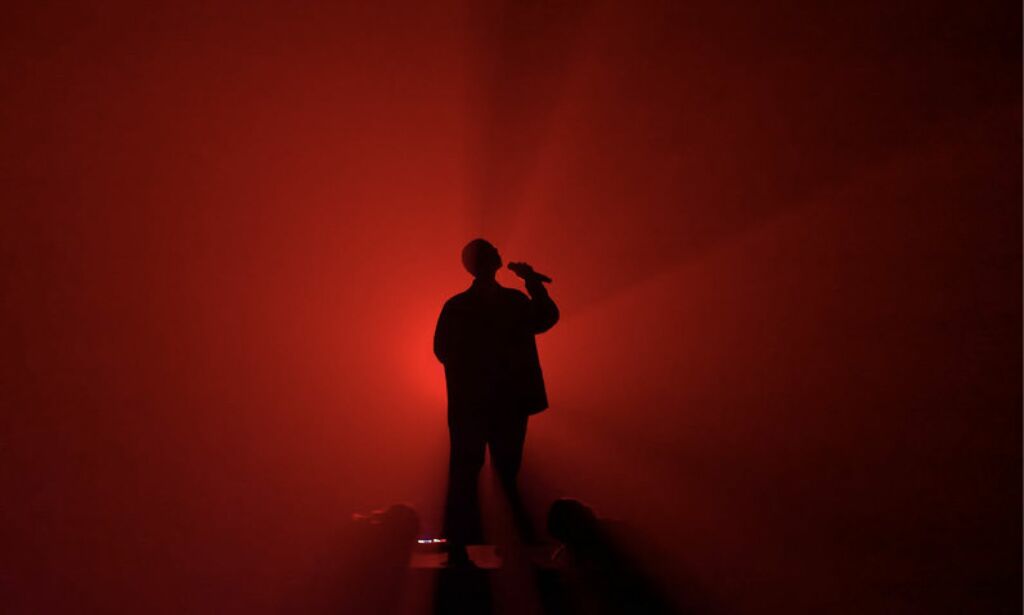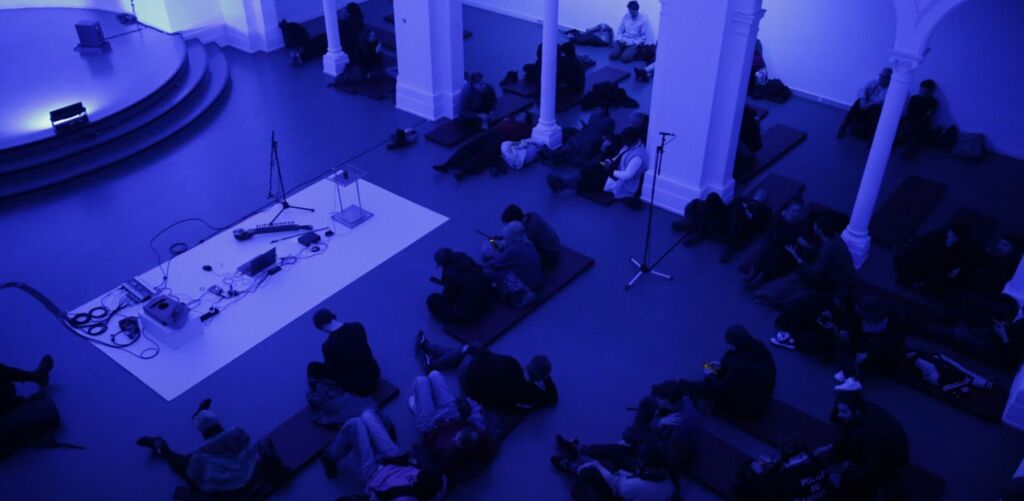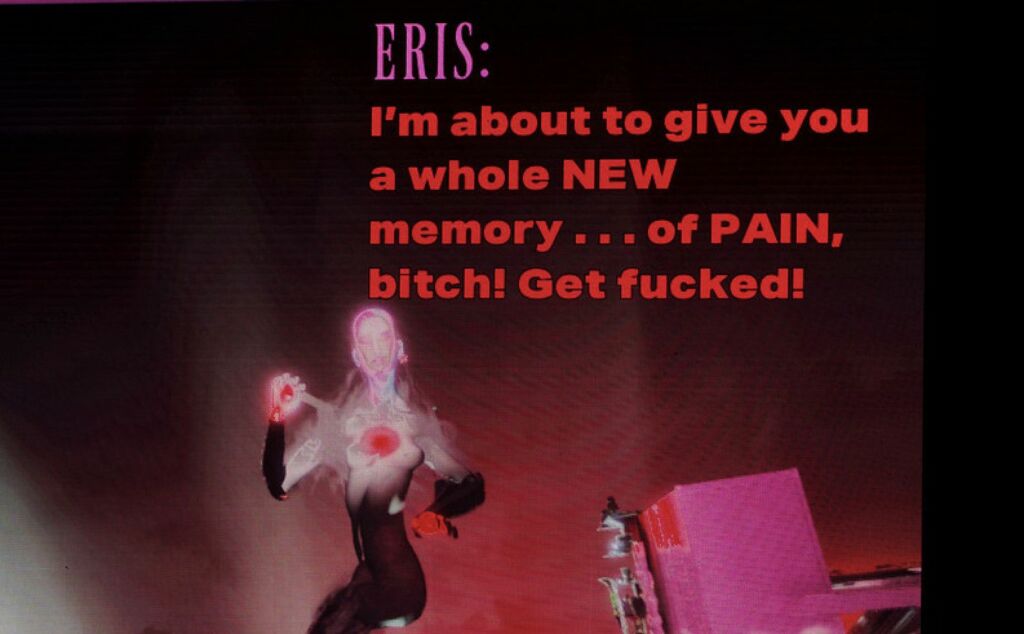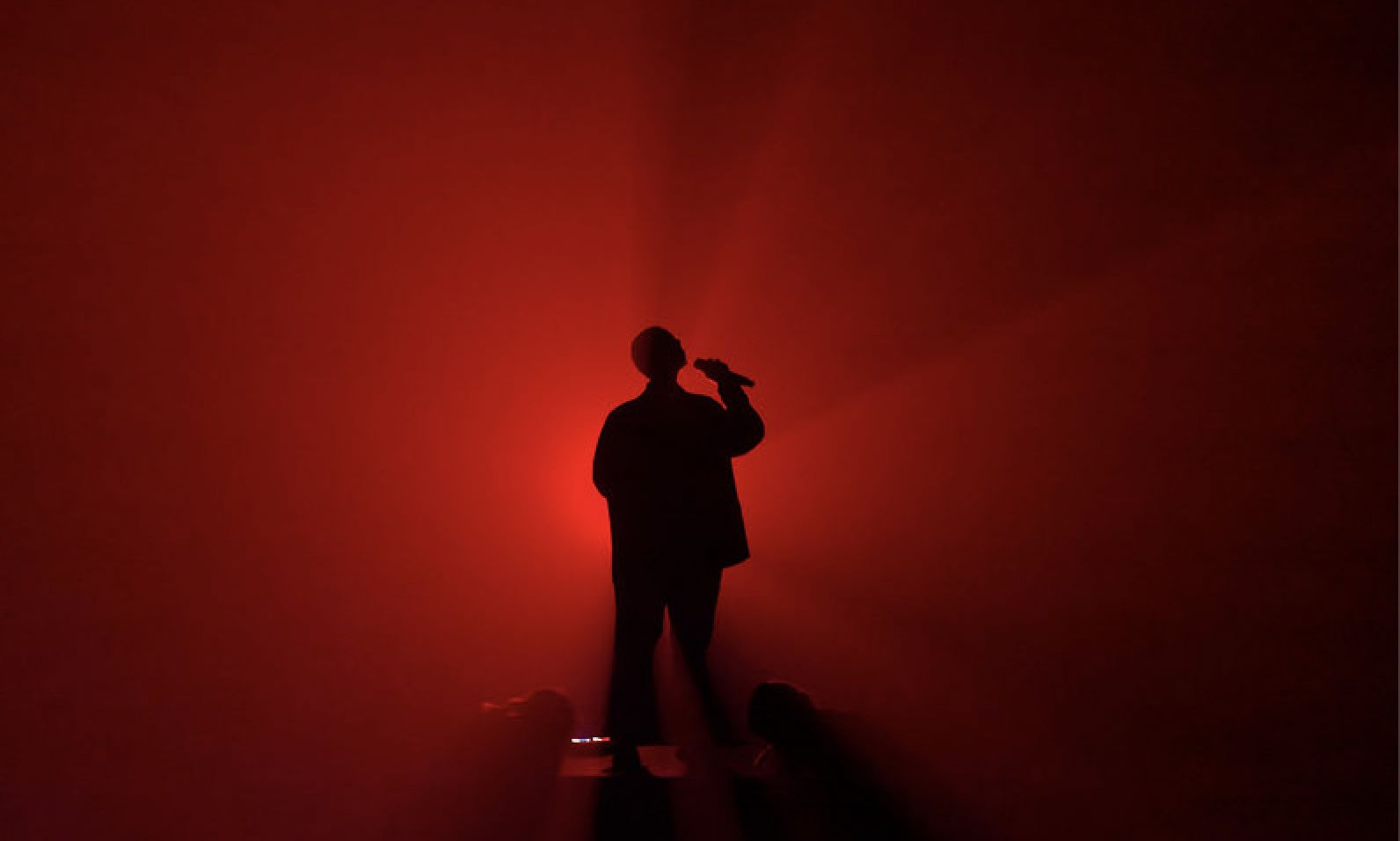Text by Olya Karlovich

Sunday evening, sitting in an old-school chair of the Akademie der Künste’s auditorium, I am trying to focus on a collaborative performance by Jennifer Walshe and Jon Leidecker. As a result, my attention is slightly scattered. Scrolling through the past week’s events in my head, I can’t believe that CTM ended so quickly! At some point, it really felt like my festival stamina, which clearly had lost steam due to lockdown, would run out first. And even though CTM is not a usual festival marathon with poor hours of sleep in a tent, its extensive and robust programme can satiate even the most indefatigable visitor.
For the 24th time, Berlin’s festival has celebrated the adventurous spirit and curiosity in music and sound and visual arts while combining educational and experimental content with fun. The current edition was dedicated to the theme Portals, and, as is always the case with CTM, there were multiple entry points for both visitors and artists to explore it. Сross disciplinary performances, sweaty concerts, all-night-long parties, shows at the intersection of IRL & URL, talks, and film screenings — literally everything for every taste. So on the first festival day, it already became clear that I couldn’t do without a plan.
It was simply impossible to be in two places at once, although sometimes I tried hard. I remember running from Hekla’s concert at the silent green, a new CTM headquarters in Wedding, to the HAU2 venue in Kreuzberg, where the engineering wizard Afrorack performed alongside the legendary composer and multi-instrumentalist Limpe Fuchs. (Their collaboration developed within the Afropollination project). Separated on opposite sides of a stage and in beams of contrasting light, Afrorack with his setup of DIY synthesisers in a cold white circle and Fuchs with percussion and various unconventional instruments in a warm yellow one were like polar, but indeed, equal forces. Sometimes, during their acoustic-synthetic dialogue, the sounds merged and dissolved into each other so much that it was difficult to glimpse the border between the two worlds. Instead, something new and bigger blossomed — polyphony beyond time and space.
Moving also between acoustic timbres and electronic elements, Contrechamps & Zwischentöne presented a unique Maryanne Amacher’s GLIA. Working on this piece, Amacher imagined a listener as a glial interface between two soundscapes (instruments and electronics). She resorted to an otoacoustic emissions principle, which is why GLIA can be pretty confusing. Sometimes my ears refused to work correctly, generating bizarre additional sounds. And also this constant odd vibration inside my cochlea…
For the first time, I experienced something like that. It was both the most beautiful and uncomfortable music. While someone unsuccessfully tried to hide by covering their ears with hands and earplugs, others sprawled on the floor, smiling with their eyes closed. But the most interesting part was exploring the space, which responded differently every time.
Not having had time to take my mind off a journey through Amacher’s portals, I was already heading to Berghain, where a musical extravaganza was planned for as many as three dance floors with the likes of OM Unit, Coby Sey, Authentically Plastic, Espectra Negra among many others. Needless to say, people began queuing up at the entrance at the very beginning of the night. But I was lucky to get inside in about twenty minutes this time. Leaving my coat in the cloakroom, I decided to take a little look around first.
There were several club nights throughout the festival. Partygoers were also hosted at Panke and RSO.Berlin. However, that Thursday event at Berghain was in particular demand. Tickets sold out in a flash, not only because they guaranteed access to the most impregnable club in Berlin. The night was co-curated by transmediale as well, so you had an excellent opportunity to see a little of everything, a kind of festival in miniature.

Alongside the most memorable moments was bela’s extreme and ominous performance in the Seüle space. The artist combined furious vocals and electronics inspired by traditional Korean folk music Nongak. The unfolding action sometimes resembled an exorcism ritual, which made it even more fascinating. And, of course, there is no way to forget the energetic live by 3OK (Zoë Mc Pherson, Jay Mitta, and DJ Diaki) with the participation of incredible dancers Nana & Zai. No words can describe what happened on the dance floor when a slapping mixture of balani and singeli with carnivalesque percussions and polyrhythms went beyond 200 bpm.
But not only for the sake of unstoppable dancing, but it was also worth going to Berghain during CTM. The two-day concert programme was held at the club as well. Rewinding my memories a little, I return to the Tuesday evening, which Audrey Chen opened. When her vocals, amplified and hyperextended with unstable signal processing, came from the speakers and then danced around like poltergeists under the concrete vaults, the blood froze in veins. How could a human make such sounds at all? Chen’s voice had no physical limitations, and at the same time, there was an incredible physicality in it.
Stefanie Egedy, who performed next, ultimately proved that our bodies and minds cannot cope with sound waves and entities attacking them with increasing force. Her Sub-Bass Dose instantly plunged the audience into a meditative state. First, the low-end vibrations penetrated even under the skull, and then they were massaging my brain, scattering through it with hundreds of goosebumps.
At one point, I thought that was probably the most unusual sound experience I’d ever had at Berghain. But then Wednesday came, and that’s when the real fun began. From dark tactile soundscapes, which Ana Fosca was painstakingly constructing layer by layer, to Ruhail Qaisar’s uncomfortable industrial noise and folklore motives mixed with heavy guitars by Maria W. Horn & Sara Parkman — the extreme spirit of black metal in its various manifestations gradually took over the techno club.
This concert is dedicated to death! A guy behind my back happily shared with his friend when the last act, the brutal metallers Wiegedood, took the stage. Closer to the night’s culmination, I realised that many of the audience were familiar with post-black metal and dark core (the kind of music Wiegedood performs) and knew what to expect.
A platform that connects not only various trends and genres but also people with different interests — partygoers, metalheads, Gen Z, and others, CTM also blurs the geographical boundaries from year to year. Moreover, this applies to festival visitors, from whom English is mainly heard, and to its line-up. Along with the collaboration between German and African artists, this edition also focused on music from South Asia. One of the key initiatives in this direction was Paul Purgas‘ project. We found our own reality. But I would also like to highlight the solo concert of Poulomi Desai. If it is even possible to call “solo” a performance in which ten more people eventually participated.
During Desai’s show, the uniformly black hall at HAU2 turned into a colourful playground, a treasure store where any spectator without stage fright could try out one of the bizarre instruments — from a modified sitar played with chopsticks and even a neck massager to skulls with built-in microcircuits. Sometimes reminiscent of Mad Hatter’s tea party, this collective improvisation challenges the very idea of authenticity by resorting to noise as a form of protest. Yet, simultaneously, it had such an attractive childish spontaneity and joy in it. But who said that art should always be serious?


The exploration of alternative performance methods was continued by Merche Blasco, who presented FAUNA. Conjuring over her custom-built devices, which seemed to be co-creators of the unfolding piece, the artist has established a new non-hierarchical communication between man and technology. Being able to see Blasko’s gestures and movements close up on the big screen behind her back added more intimacy to the performance. The boundaries between action and observation, artist and spectator, instruments and performer have blurred. We all found ourselves in the space of collective experience that existed “here” and “now”.
CTM was in many ways about this feeling of ‘being in the moment’ — the first festival in its former format after the lockdown. With festival venues finally filled, small talks with strangers and hugs with friends, and trips around the city from one event to another. But while enjoying this freedom again, it is impossible not to notice how the world has changed and continues to do so.
And every year, CTM becomes not only a platform for emotional expression, social interaction and entertainment but also for an empathic dialogue and reflection. For example, in the Rybachka project initiated by Mariana Berezovska, Ukrainian-Syrian visual and sound artist Diana Azzuz and Iranian artist and musician Nazanin Noori combined their creative and personal backgrounds to ‘deconstruct pain’ and find ways of healing in co-creation. Applying the language of abstractions, in a collaborative audiovisual performance, they translate the universal emotions of emergency, oppression and war — numbness, fear and anxiety, thus addressing the issue of empathy lack and, at the same time, ‘raising awareness of the less obvious consequences of war and violent conflicts’.
Bringing together different contexts, experiences and socio-political realities, CTM backed it up with an annual discursive program and practical formats such as A2A Transmission Workshops or the MusicMakers Hacklab. A nice bonus, despite taking place IRL this year, many discussion events were recorded and are now available on YouTube.
When Jennifer Walshe and Jon Leidecker left the stage, I remembered that I also wanted to rewatch a couple of festival panels. And that’s all the plans for the rest of my Sunday. Taking the S-Bahn, I still can’t believe I am going home and not to another concert.






